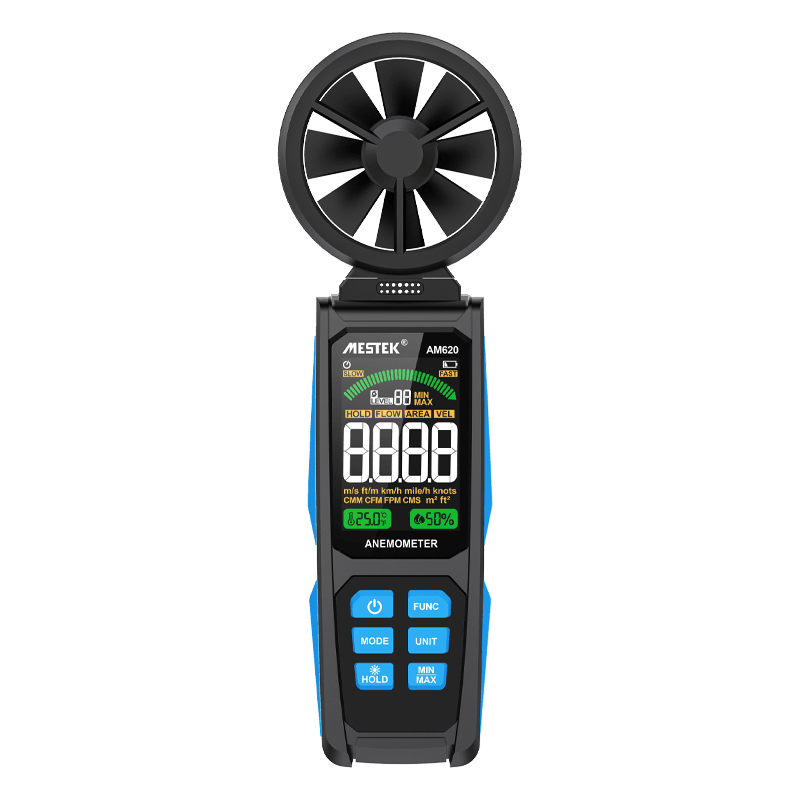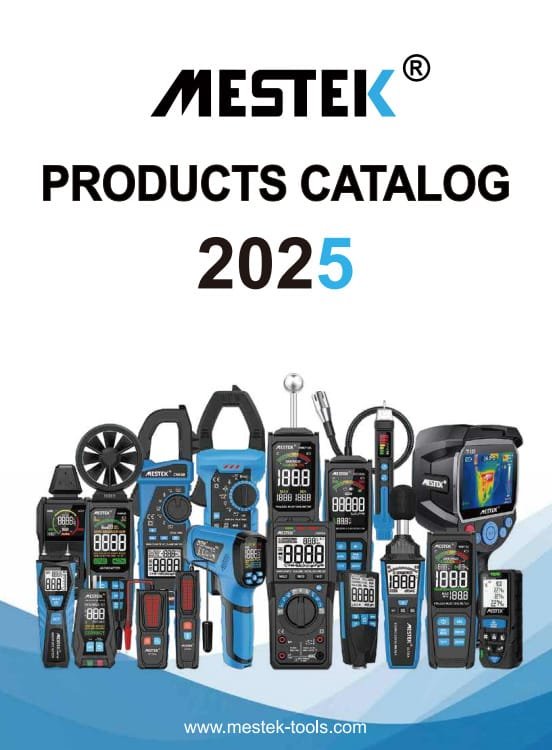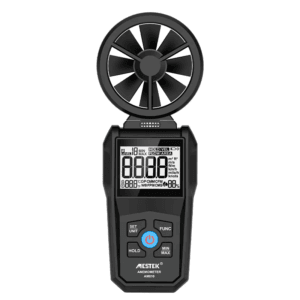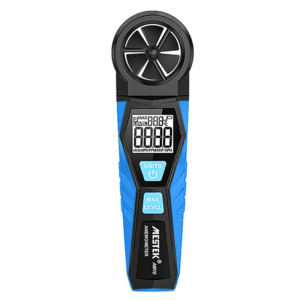Anemometer AM620 has a measurement range of 0.8m/s to 30m/s. It has a resolution of 0.1m/s and can provide accurate wind speed readings. It can measure temperatures from -10 to 60°C, making it ideal for heating systems. The anemometer also offers five wind speed type adjustments to meet different wind speed test requirements. The device’s 0.4 second sampling rate and five wind speed unit conversion functions make measurement more efficient and convenient. The use of NTC negative temperature coefficient sensors ensures accurate temperature and wind speed measurements.
Functions
| Wind speed range | 0.8~30.00 m/s |
| Resolution | 0.1m/s |
| Accuracy | +(3.0%+0.3m/s) |
| Wind rating | 0~12 level |
| Accuracy | ±1 |
| Temperature measurement range | 0°C~70°C/-32°F~158°F |
| Accuracy | +1.5°C (±2.7°F) |
| LCD | Four-digit display |
| sensor | NTC negative temperature coefficient senso |
| Sampling rate | 0.5 seconds |
| Five wind speed unit conversion | m/s, km/h,ft/min,knots,mph |
| Backlit display | √ |
| Maximum measurement indication | √ |
| power supply | 3*1.5V AAA |
| physical dimension | 154*59*30(mm) |
| weight | 108g (including battery) |
Factory Showcase
Mestek achieves high standards and high consistency in product inspection and calibration through precise machinery and a clean environment.
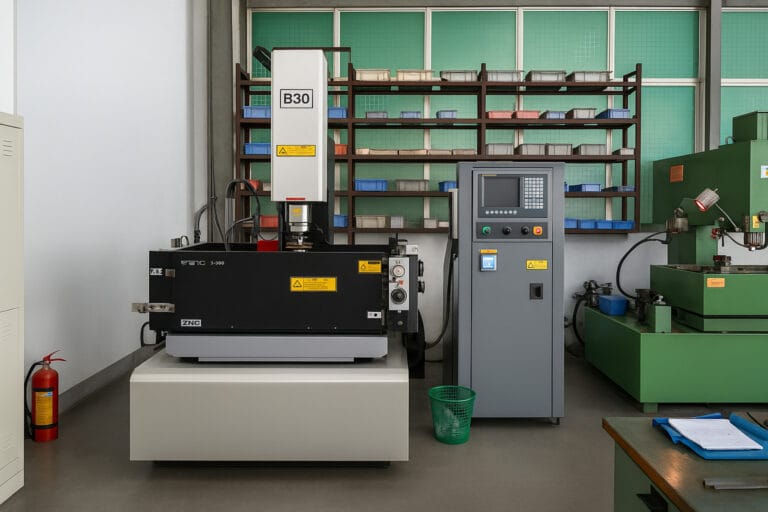


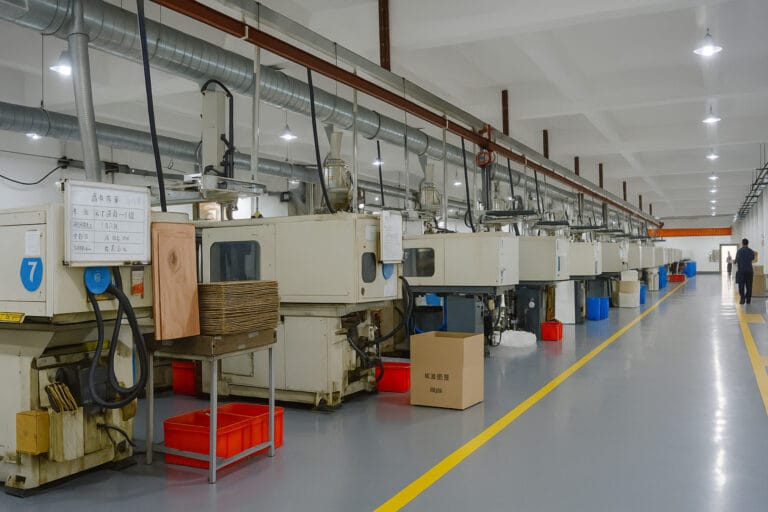

FREQUENTLY ASKED QUESTIONS
What is an anemometer used for?
An anemometer measures wind speed and airflow in applications like HVAC testing, weather monitoring, and ventilation inspection. Digital anemometers provide instant readings for both indoor and outdoor environments.
Can I use an anemometer indoors?
Yes, anemometers for HVAC testing can measure airflow from vents, ducts, or exhaust fans, helping diagnose poor ventilation or air conditioning performance.
Can an anemometer measure temperature and humidity?
Some multi-function anemometers include temperature and humidity sensors, useful for HVAC diagnostics or environmental monitoring. Check your model’s specifications for these features.For example: MESTEK AM10
Is a vane or hot-wire anemometer better?
Vane anemometers are durable and ideal for higher airflow, while hot-wire anemometers are more sensitive for low-speed measurements and laboratory testing. blog: “Which of the four anemometers types is best for you?”
What is the ideal range of wind speed an anemometer can measure?
Typical digital anemometers measure from 0.8 m/s to 30 m/s, suitable for HVAC, laboratory, and light outdoor applications.
How accurate are handheld anemometers?
Most handheld wind speed meters offer accuracy within ±2%–5%, depending on the model and calibration. Stable readings require holding the sensor steady and avoiding obstructions.
